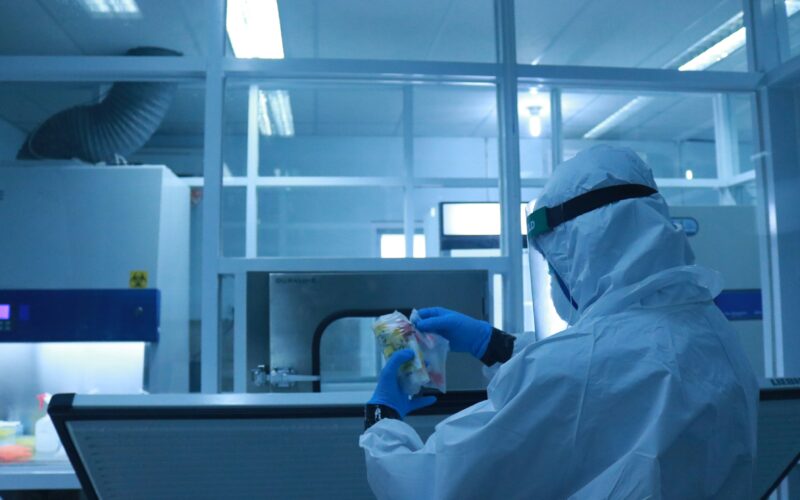AIM ImmunoTech Inc. (NYSE:AIM) traces its roots to 1966, when the company—then known as Hemispherx Biopharma—set out to harness double-stranded RNA molecules to boost human immune defenses. Over six decades the Florida-based biotech has evolved from a small research outfit into a clinical-stage innovator focused on Ampligen®, a first-in-class selective toll-like receptor 3 (TLR-3) agonist with broad immunomodulatory and antiviral potential. The 2019 rebrand to AIM ImmunoTech signaled a sharpened strategic identity: translate a deep heritage in innate-immunity science into therapies for life-threatening cancers, chronic fatigue–related disorders, and hard-to-treat viral illnesses.
Ampligen sits at the heart of AIM’s story. Originally developed to combat viral pathogens, the compound quickly distinguished itself in early studies by activating interferon pathways and enhancing natural-killer-cell function without the systemic toxicity typical of other immune stimulants. Over the years Ampligen secured orphan-drug status for myalgic encephalomyelitis/chronic fatigue syndrome (ME/CFS) and entered numerous investigator-sponsored trials, laying the groundwork for today’s expansive pipeline. AIM is now advancing Ampligen in combination with AstraZeneca’s durvalumab for advanced pancreatic cancer, pursuing parallel programs in recurrent ovarian cancer, post-COVID fatigue, and other immuno-oncology indications—all while exploring its use as an intranasal antiviral and a universal flu-vaccine adjuvant.
To support that clinical sprint, AIM completed a manufacturing scale-up in 2024 that yielded more than 9,000 vials of clinical-grade Ampligen and secured a new U.S. patent extending the drug’s intellectual-property runway. In June 2025 the company executed a 1-for-100 reverse stock split—approved by shareholders and effective June 12—to bolster its share price and maintain NYSE American listing compliance through at least mid-2026. Although reverse splits can spook investors, the move simplified AIM’s cap table and positioned it to attract institutional biotech funds ahead of a critical stretch of data readouts.
Management has paired these operational strides with high-profile collaborations that validate the science. Beyond AstraZeneca, AIM maintains research ties with Merck and the U.S. National Cancer Institute, underscoring industry recognition of Ampligen’s mechanism and commercial promise. Insider buying by Chief Executive Officer Thomas Equels further reinforces confidence, signaling that those closest to the data believe the company is on the verge of a value-inflection cycle.
Today AIM ImmunoTech stands at the intersection of decades-long scientific groundwork and a near-term catalyst calendar loaded with Phase 1b/2 oncology results, potential Fast-Track designations, and additional partnership announcements. For investors seeking exposure to an underfollowed immunotherapy platform with multiple shots on goal—and management determined to preserve shareholder value through disciplined compliance and capital allocation—AIM offers a compelling, if volatile, avenue for growth.
Clinical Pipeline Accelerates in 2025 With Multiple Readouts Ahead
Momentum is building for AIM as its clinical pipeline hits key inflection points. The Phase 1b portion of the DURIPANC study is on track to complete in Q1 2025, with Phase 2 commencing shortly after. This milestone is crucial, not only because pancreatic cancer remains one of the deadliest forms of cancer with limited effective treatments, but because the use of Ampligen in combination with a PD-L1 checkpoint inhibitor like Imfinzi could open doors to accelerated approval pathways and new licensing opportunities. Beyond DURIPANC, AIM has announced parallel trials in ovarian cancer and ME/CFS (myalgic encephalomyelitis/chronic fatigue syndrome), and is planning additional studies in post-viral fatigue conditions. All of these address markets with high unmet needs and limited competition.
What further strengthens AIM’s pipeline is the completion of a major manufacturing scale-up in 2024, with more than 9,000 clinical vials of Ampligen now available for current and future trials. The company has also strengthened its IP position through a new U.S. patent granted for Ampligen, giving it longer runway to execute and protect value. With solid trial design, scalable infrastructure, and regulatory engagement, AIM appears to be progressing from a speculative micro-cap to a potential leader in targeted immunomodulation.

CHECK THIS OUT: Exact Sciences (EXAS) Just Made Cancer Detection 100x Easier! and Soleno Therapeutics (SLNO): The Biotech Company That Could Make You Rich.
Strategic Partnerships and Insider Confidence Highlight Institutional Momentum
Institutional credibility matters in biotech, and AIM ImmunoTech is gaining it. The company’s collaboration with AstraZeneca not only provides validation for its science, but also strengthens the likelihood of future co-development or commercial partnerships. AIM has also engaged with Merck and the National Cancer Institute, further supporting the view that it is being taken seriously by major players in the oncology and immunotherapy space. These partnerships are not superficial—they are rooted in real clinical trials with real patient outcomes on the horizon.
Another sign of confidence comes from inside the company. CEO Thomas Equels and other executives have recently increased their equity positions in AIM, signaling strong insider conviction. When executives are willing to bet on their own pipeline, especially in a high-risk field like biotech, it often precedes inflection points that reward long-term shareholders.
Navigating Volatility With Compliance Extensions and a Cleaner Cap Table
In June 2025, AIM successfully executed a 1-for-100 reverse stock split and received an extension from the NYSE American exchange to remain listed until June 2026. While reverse splits are often seen as red flags, in AIM’s case, this maneuver was necessary to meet minimum price requirements and position the company for future institutional inclusion. With the split complete and trading stabilized, AIM is now better positioned to attract biotech-focused funds and long-term holders. Additionally, the company’s cleaned-up capital structure means reduced noise from speculative trading and a clearer path to valuation re-rating if and when its trials deliver.
With the compliance box checked, investors can focus on what matters: trial data and milestone execution. AIM now has a critical 12–18 month runway to deliver results that could justify significantly higher valuations. Investors who are early to this story may benefit from multiple catalysts as trial readouts begin to emerge in early 2025 and continue through 2026.
Valuation and Market Comparison: AIM vs. Sector Leaders Like GSK and AMRN
To appreciate AIM ImmunoTech’s potential, it’s helpful to contextualize its performance relative to broader sector trends. For instance, pharmaceutical giant GlaxoSmithKline (GSK) has been one of the standout performers in the medical sector this year, delivering a return of 15.9% year-to-date, compared to an average decline of 6.5% for the sector. GSK currently holds a Zacks Rank #2 (Buy), backed by strong earnings estimate revisions and growing analyst sentiment. Likewise, Amarin Corporation (AMRN), another medical small-cap focused on cardiovascular and inflammation-related treatments, has gained 16.4% this year and also boasts a Zacks Rank of #2. These companies illustrate that even in a challenging macro environment, select biotech and pharmaceutical stocks can deliver strong returns when supported by clinical data and improved guidance.
What makes AIM unique is that it operates in a similarly promising industry subgroup—Medical-Biomedical and Genetics—but offers an even deeper discount in terms of market capitalization and future growth optionality. While the average stock in this group has lost 5.4% in 2025, AIM is positioned to outperform dramatically if just one of its trials meets endpoints or receives Fast Track designation. The same way that GSK and AMRN have leveraged positive revisions and institutional momentum to drive gains, AIM has all the foundational pieces to follow a similar trajectory—except its upside potential is significantly greater due to its low starting valuation.
High-Risk, High-Reward Setup With Favorable Asymmetry
AIM ImmunoTech is not for the faint of heart. This is a speculative clinical-stage biotech that still depends on successful trial outcomes and may require additional financing in 2025–2026. However, with strong partnerships, advanced-stage trials, a unique therapeutic platform, and a cleared compliance path, AIM offers one of the most attractive asymmetric setups in the micro-cap biotech universe.
The market has largely overlooked AIM, and that presents an opportunity. Should positive data emerge from the DURIPANC trial in Q1 2025 or any of its ongoing programs, shares could re-rate sharply higher—possibly by several multiples. Investors seeking exposure to early-stage biotech with real IP, credible partners, and multiple shots on goal should seriously consider AIM ImmunoTech as a speculative addition to their portfolio. This is a case where early positioning ahead of expected clinical readouts could offer tremendous upside relative to the risk assumed.
READ ALSO: Johnson & Johnson (JNJ) can be the Next Trillion-Dollar Stock and Boston Scientific (BSX) Just Signed a $45M Deal—Here’s What It Means for Investors.








